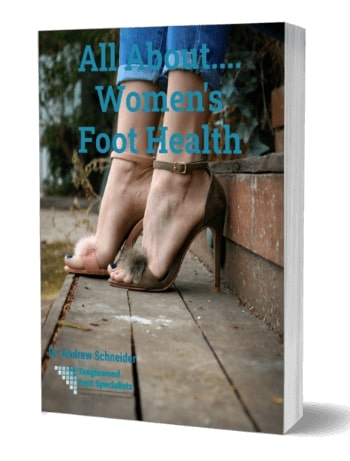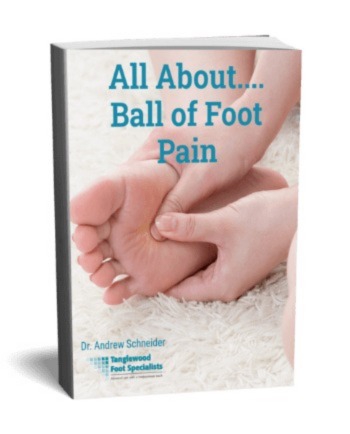
What does a podiatrist treat? In our Houston podiatry practice, Tanglewood Foot Specialists, we treat patients of all ages. We see everyone from children to active seniors, for a variety of foot and ankle problems. Often, these patients delay coming in. So we see them after they've lived with their feet problems for far too long.
That's why, today, we want to give you an important reminder: Foot pain is never normal! And waiting to treat the pain in your feet will cause your condition to worsen. But that doesn't mean foot pain isn't common. In fact, the American Podiatric Medical Association thinks that 75% of Americans experience foot pain at some point in their lives.
Now, foot pain comes from so many causes. And triggers so many symptoms. That's why people always ask us, what does a podiatrist treat? Amd what are the most common foot problems we see each day? Here's what we tell them?
What Does a Podiatrist Treat? 7 Common Foot (and what to do about them)
Why are we telling you about the top reasons people come to see our podiatrist in Houston? Well, as we said earlier, many patients delay seeking treatment. So we want you to read this list carefully. And, if any of the symptoms sound familiar, come see us for help right away.
Plantar Fasciitis
This condition comes from painful inflammation of the ligament that attaches to your heel, supporting your arch. Ligament pain can be a big problem, but people don't always talk about it. We actually think that epic Simone Biles' Olympic withdrawal had something to do with an inflamed foot ligament. Because, while she said she withdrew due to mental health concerns, she talks about a ligament problem in her Facebook watch series.
Underplaying your pain could lead to your version of Simone-level problems. If you have plantar fasciitis, you may experience heel pain and arch pain. At first, the pain will be worst when you first get out of bed. Or when you stand up after sitting for a long time. But, without seeking help, your condition will progress. And waiting too long for help can cause the pain to stop you from exercising.
Once you come in to the office, we can explore non-invasive heel pain solutions. These include stretching, icing, NSAIDs and night splints. For some people, custom orthotics can also offer relief. But wait too long, and your heel pain won't clear up without serious interventions. And you may develop other types of foot and ankle pain.
Morton's Neuroma
This painful foot problem also comes from inflammation. But with a neuroma, that inflammation impacts a nerve in the ball of your foot. (If the nerve is between your second and third toe, it's called a Morton's neuroma.) With this condition, your pain feels worse when you're wearing tight shoes. Especially if they also have high heels. Thankfully, treatment for the neuroma is usually successful in eliminating the pain. We can start by suggesting changes in your footwear, or custom orthotics. But if you wait too long for help, you may need cortisone injections or surgery to treat your Morton's neuroma.
Bunion ![top 7 foot problems bunion]()
A bunion is a painful bump on the side of the great toe joint. (Sometimes, they develop beside your baby toe. In that case, we call this bump a tailor's bunion or bunionette.) Often, you develop a bunion because of your genetics. Which is why we say many bunions are hereditary. Still, when caught early, we can often control bunion growth and pain. But if you leave the bunion to grow, unchecked, it will become large and painful. And that means you'll have limited shoe choices. It will also limit the effectiveness of less-invasive treatments, like padding and orthotics. In some cases, waiting too long means your only option for pain relief will be surgery.
Hammer toes
This problem can go hand-in-hand with bunions. With a hammer toe, your smaller toes give in to the tendency of buckling and becoming crooked. Poorly fitting shoes that don't fit can also increase your hammertoe risk. But this problem is usually due to inherited mechanics. Pressure on the toes can also cause painful corns and calluses to form. In my office, we can provide toe splints and supports to relieve hammer toe pain. Custom orthotics can also help prevent pressure on your toes. In more serious cases, we'll treat your crooked toes surgically.
Ingrown Toenails
Toenails can dig into your skin, causing inflammation, infection and extreme pain. Your toenail could grow inward if you trim it improperly. But the problem could also be a natural curving of the nails. Or you may have inherited a tendency for developing ingrown nail problems.
Don't ever treat your ingrown toenail at home. This is a dirty, dangerous idea. Instead, come into the office and we'll numb and trim your ingrown nail. In certain cases, you may need a more involved procedure. But it should always happen in our office, never as a bathroom surgery.
Heel Spur
A heel spur is a piece of bone that grows beneath the heel bone. It forms because of constant strain on the bone from its attached ligament. People often confuse this problem with plantar fasciitis as the cause of heel pain. But we usually don't have to remove a heel spur, as long as we address your foot pressure before it gets too large.
Toenail Fungus
If you have thick nails, or they're discolored, crumbly, and unattractive, you may have a fungal toenail infection. While many think this is a cosmetic, it's not. Fungus on your toenail can spread and cause an Athlete's foot infection. But I can stop that spread by prescribing oral or topical medications for toenail fungus.
Now you know some of the top causes of foot pain. And you've also seen how we can treat them with less intervention if you see us when symptoms are just beginning to develop. Are experiencing one or more of these conditions? Don't wait another day to seek relief. Instead, contact Dr. Andrew Schneider for a thorough evaluation. When you come in, you will receive the proper diagnosis. Then we can identify the best treatment for your condition. Luckily, thanks to our new regenerative medicine treatment options, including PRP and Shockwave therapy, we can often clear up your foot pain painlessly, by harnessing your own body's natural healing abilities!


















